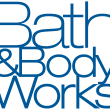by Hubert Marleau, Market Economist, Palos Management
June 9, 2023
Will there be a recession? The short answer is yes, but when? It's a matter of time. Indeed, a yield-curve-model-based model from the Federal Reserve Bank of New York puts the odds of a recession over the year at 71%, the yield curve (2’s - 10’s) having now been invested for almost 250 days.
In this connection, we have witnessed 18 months of nonstop recession chatter. Indeed, the model itself is not very meaningful because it gives neither a precise starting date nor an expiration date. Moreover, probability can change quickly with every economic print.
Over the past few months, recession indicators have piled up outside the US labour market. As consumers have switched from spending on goods to services, industrial activity has slumped into a recession. The ISM manufacturing index slipped to 46.9 and has been below 50 since November. However, the view from the corporate suite is rather optimistic. In a recent survey of CEOs, conducted by Axios Markets, it was revealed that they intend to continue hiring and maintain capital spending plans. What they saw was an economy that had cooled down from its high inflationary state without plunging sales and mass layoffs typically associated with a recession. They expect the economy to muddle along, with slow growth, projecting a 1.5% GDP improvement in 2023.
What we are witnessing is an adjustment from a decade of abnormality, including the financial crisis and the pandemic, plus extraordinary fiscal and monetary stimulus. Consequently, nothing follows tradition here because these distortions have completely disrupted the economy, making this cycle very different.
In fact, there is evidence that a traditional recession may not be imminent. The economy is still adding a lot of jobs, and it's likely to continue doing so, due to the large number of unfilled job openings. The point is that we may have already had our recession. GDP contracted in the first 2 quarters of 2022. Jan Hatzius cut Goldman Sachs’ subjective odds of a recession to 25%, reversing the previous upward revision of 35% triggered by the collapse of SVB. His confidence is based on the fact that the economy is receiving a substantial boost from the recovery in real disposable income, as well as an upswing in the housing and automotive sectors.
On Thursday, the S&P 500 closed at 4294, up 20% from the October low of 3578 - a key level that marks the end of the longest bear market since 1948 and the entry into a new bull. The bears, who believe that the market is top-heavy and inherently unsustainable, were unable to prevent the market from crossing the last red line of resistance. Now the market is officially at the starting line of the new bull run. Defying existing risks, this bullish momentum could propel the S&P 500 to the next level of resistance at 4550.
There are concerns about the narrowness of this rise. Yardeni’s “Magnificent 8” - Nvidia, Microsoft, Apple, Amazon, Meta, Alphabet, Tesla and Netflix - have dominated the market. However, this dominance may change. Over the past week, gains have outnumbered losses, and new highs are outstipping new lows. Indeed, there are many beaten-down cyclicals, banks and utilities with strong balance sheets, and good growth prospects ready to adopt digitalisation to cut costs. These sectors could potentially pick up the slack left by the MegaCap-8. Investors who missed this band wagon may feel compelled to enter the race because the big technology stocks are not in bubble territory yet. On average, the profit outlook for Nvidia, Microsoft and Google is around the annual rate of 35% for the next 3 years. In this regard, their peg ratio is still very attractive.
Additionally, investors have embraced some risk in June. Small-cap stocks have rallied lately because they are relatively cheap, offering catching up potential to large-caps. To achieve this incredible feat, however, investors must be convinced that the Fed will pause rates, rather than raise them. For this to happen, inflation needs to fall more than it already has, and productivity has to increase.
On the inflation front, the May ISM Service Survey shows that the fall in price paid, to 56.2 from 59.9, is consistent with a steep drop in wage growth. Wages are by far the biggest expense for services firms, and the Fed has made it clear that they want to see slower wage gains impact core PCE services inflation, excluding rent. Pantheon Macro wrote in a note that it would be surprising to see year-over-year growth in average hourly earnings fall to 2.5% by the end of 2023, but a further significant downshift is all but inevitable. Meanwhile, Hiring Lab reported that US wage growth in May was 5.3%, 4 full percentage points lower than the high in January 2020. This suggests that if the current rate of deceleration persists, wage growth should return to the pre-pandemic average of 3.1% later this year. That would be consistent with on-target inflation.
Interestingly, the Global Supply Chain Pressure Index (GSCPI) decreased again in May to -1.71 from -1.35 in April. The index is now considerably below its historical averages, indicating reduced pressure on global supply chains. In this connection, the Manheim Gauge showed that used car prices notched another monthly decline in May, dropping by 2.7%, registering a year-over-year decline of 7.6%. Moreover, the UN’s FAO index, a global gauge of food prices, found that prices in May resumed their decline from the spike caused by war-driven factors.
On the productivity front, the trend is turning for the better also. Over the 12 months ending in March 2023, the upturn in employment accounted entirely for the 2.3% increase in GDP. Based on the Atlanta Fed’s NowCasting model, it is projected that the level of economic activity will rise at the annual rate 2.2% in Q2, with an expected annual increase of 1.5% in employment. Therefore, a 0.7% productivity gain is foreseeable.
Given the rapid adaptation of technology, a steady increase in business capital formation, the power of AI and less labour hoarding, it is probable that productivity growth could soon return to its long-term experience. There is conclusive evidence that advancements in technology, investment in business assets, and digitalization can enhance productivity.
While the aforementioned factors will likely influence the Fed’s thinking, the surprise increase in jobless claims could give the monetary authorities the extra push to declare a pause. Traders are predicting one, but they are split on what will happen at the July meeting. Of course, Tuesday’s consumer price for May could upset the apple cart, should the year-over- year increase exceed the 4.2% consensus.
Although the S&P 500 has crossed the Rubicon to close at 4298 on Friday, registering a weekly win of 16 points, it is hard to find an unequivocally bullish investor. Surveys show that bears outnumber bulls and leveraged funds nearly all have short positions. Yet, the mood has improved somewhat. The FT reported that Goldman Sachs’ market sentiment indicator has just turned positive for the first time since the autumn, while a weekly survey by the US National Association of Active Managers showed the biggest one-week jump in its menbers’s equity positions in two years and their highest holdings since November 2021. According to a Bank of America survey, money managers overseeing trillions of assets now hold almost 6% of the portfolio in cash. That is a lot of dry powder.
Copyright © Palos Management














